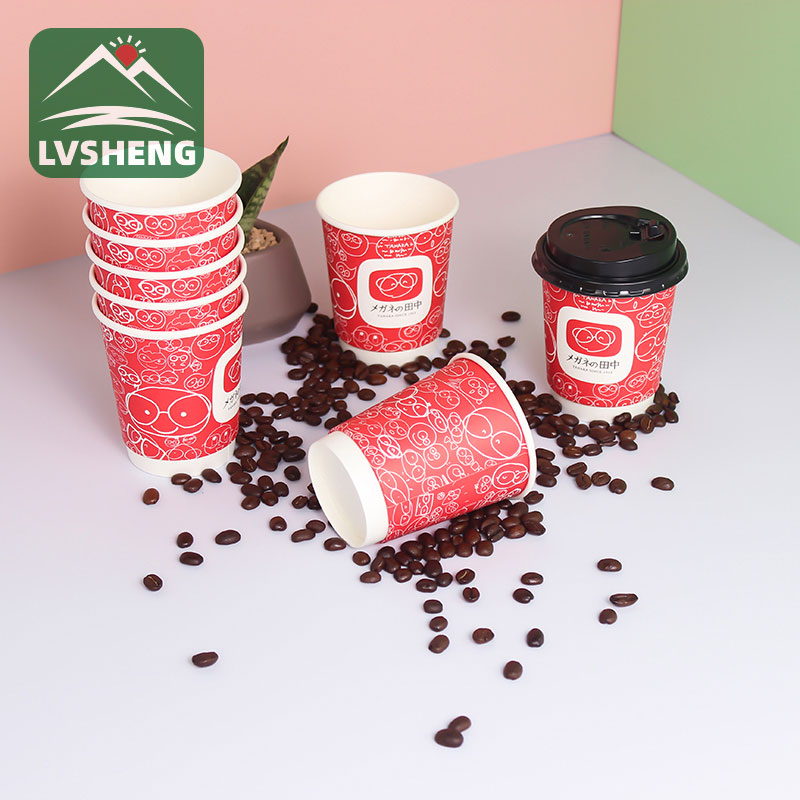The Science Behind Waterproofing: How Paper Cups Are Coated for Performance
2024-02-27
Introduction:
Paper cups have become a ubiquitous part of our daily lives, offering a convenient and eco-friendly way to enjoy beverages on the go. But have you ever wondered how these seemingly simple containers are able to withstand liquids without leaking or disintegrating? The secret lies in the coating applied to the paper surface, which provides waterproofing and enhances the cup's performance. In this blog, we'll delve into the science behind waterproofing paper cups, exploring the coating process and the materials involved.
Understanding Waterproofing Coatings:
Paper cups are typically coated with a thin layer of waterproofing material to prevent liquid absorption and leakage. The coating creates a barrier between the paper surface and the beverage, ensuring that the cup remains intact and functional throughout its use. There are two primary types of coatings used in paper cup manufacturing: polyethylene (PE) and polylactic acid (PLA).
1. Polyethylene (PE) Coating:
Polyethylene is a versatile and widely used plastic resin known for its water-resistant properties. In the paper cup industry, polyethylene coatings are applied to the inner surface of the cup to provide a protective barrier against liquids. The coating is typically applied in a molten state and then solidified through cooling, forming a seamless and impermeable layer that prevents moisture from penetrating the paper fibers.
2. Polylactic Acid (PLA) Coating:
Polylactic acid, or PLA, is a biodegradable and compostable material derived from renewable resources such as corn starch or sugarcane. PLA coatings offer similar water-resistant properties to polyethylene while being more environmentally friendly. The coating is applied to the paper surface using a similar process to polyethylene, forming a biodegradable barrier that breaks down naturally in composting facilities.
The Coating Process:
The coating process for paper cups typically involves several steps to ensure uniform coverage and adhesion of the waterproofing material. Here's an overview of the process:
1. Preparing the Coating Solution: The polyethylene or PLA resin is melted and mixed with additives to improve adhesion, flow, and durability. The mixture is then heated to the desired temperature and viscosity for application.
2. Coating Application: The coating solution is applied to the inner surface of the paper cup using a variety of methods, including spraying, dipping, or extrusion coating. The coating is evenly distributed across the surface, forming a thin layer that adheres to the paper fibers.
3. Solidification: Once applied, the coating undergoes a solidification process to cure and harden. This may involve cooling the coated cups using air or water, or passing them through a series of heated rollers to promote bonding and adhesion.
4. Quality Control: Throughout the coating process, strict quality control measures are in place to ensure that the coating meets industry standards for thickness, coverage, and performance. Samples of coated cups are tested for water resistance, adhesion, and durability to verify compliance with specifications.
Benefits of Waterproofing Coatings:
The application of waterproofing coatings offers several benefits for paper cups:
1. Leak Prevention: The coating prevents liquid absorption and leakage, ensuring that the cup remains intact and functional during use.
2. Enhanced Durability: Waterproofing coatings improve the strength and resilience of the paper cup, reducing the risk of tearing or disintegration.
3. Improved Hygiene: Coated paper cups provide a sanitary barrier between the beverage and the consumer, promoting hygiene and safety.
4. Environmental Sustainability: Biodegradable coatings such as PLA offer a more sustainable alternative to traditional polyethylene coatings, reducing the environmental impact of disposable packaging.
Conclusion:
The application of waterproofing coatings plays a crucial role in enhancing the performance and functionality of paper cups. By creating a protective barrier against liquids, these coatings ensure that paper cups remain leak-proof and durable throughout their use. Whether made from polyethylene or biodegradable PLA, waterproofing coatings contribute to the convenience, hygiene, and sustainability of paper cup packaging, making them an indispensable part of modern-day beverage consumption.



